One of the biggest difference of Snowflake from the other types of cloud-based data warehousing is that Snowflake offers a pricing control, which allows companies to manage their usage and costs effectively. You can check your usage history in a very detailed way and adjust the limitation of usage in specific areas to be able to manage your Snowflake account better.
Important Note: only ACCOUNT ADMIN role can see the usage detail of the account.
How to check your usage history in Snowflake
There are several options to make this control, the first one and the simplest one is
to check it from snowsıght
- Log in to your Snowflake account and navigate to the “Admin” tab:
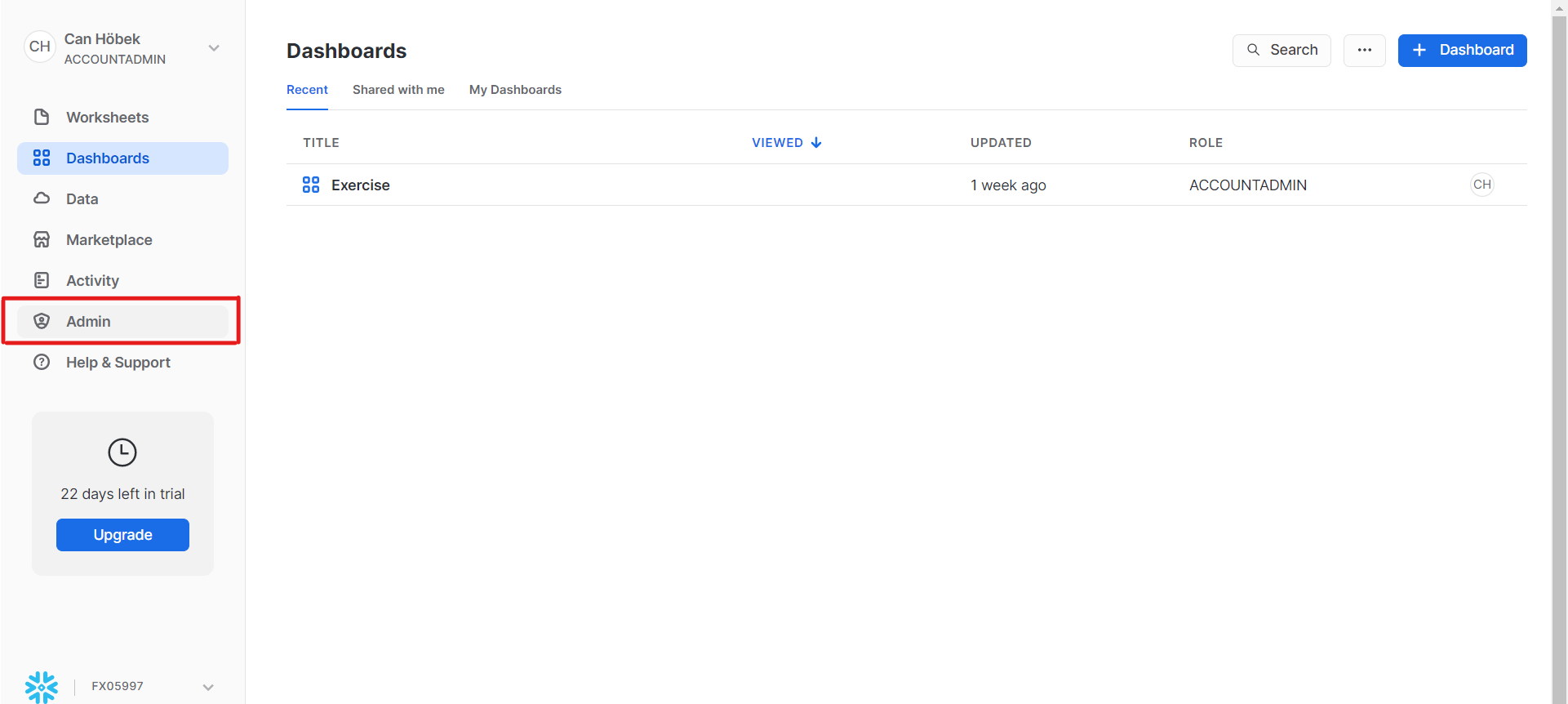
- 2. Click on the Usage tab:
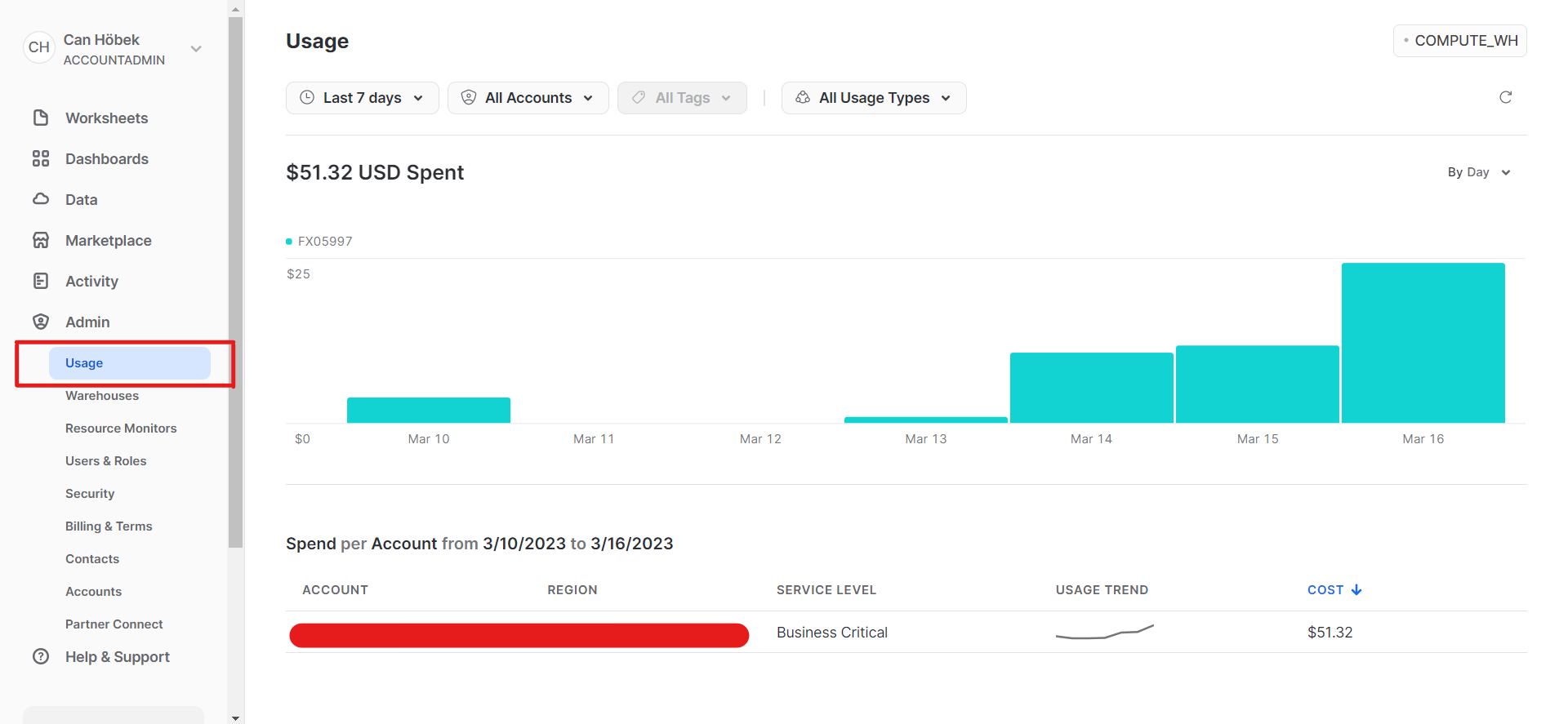
3. Here, you can view your usage history, you can filter the time that you want to see for the specific period; for day, for months…:
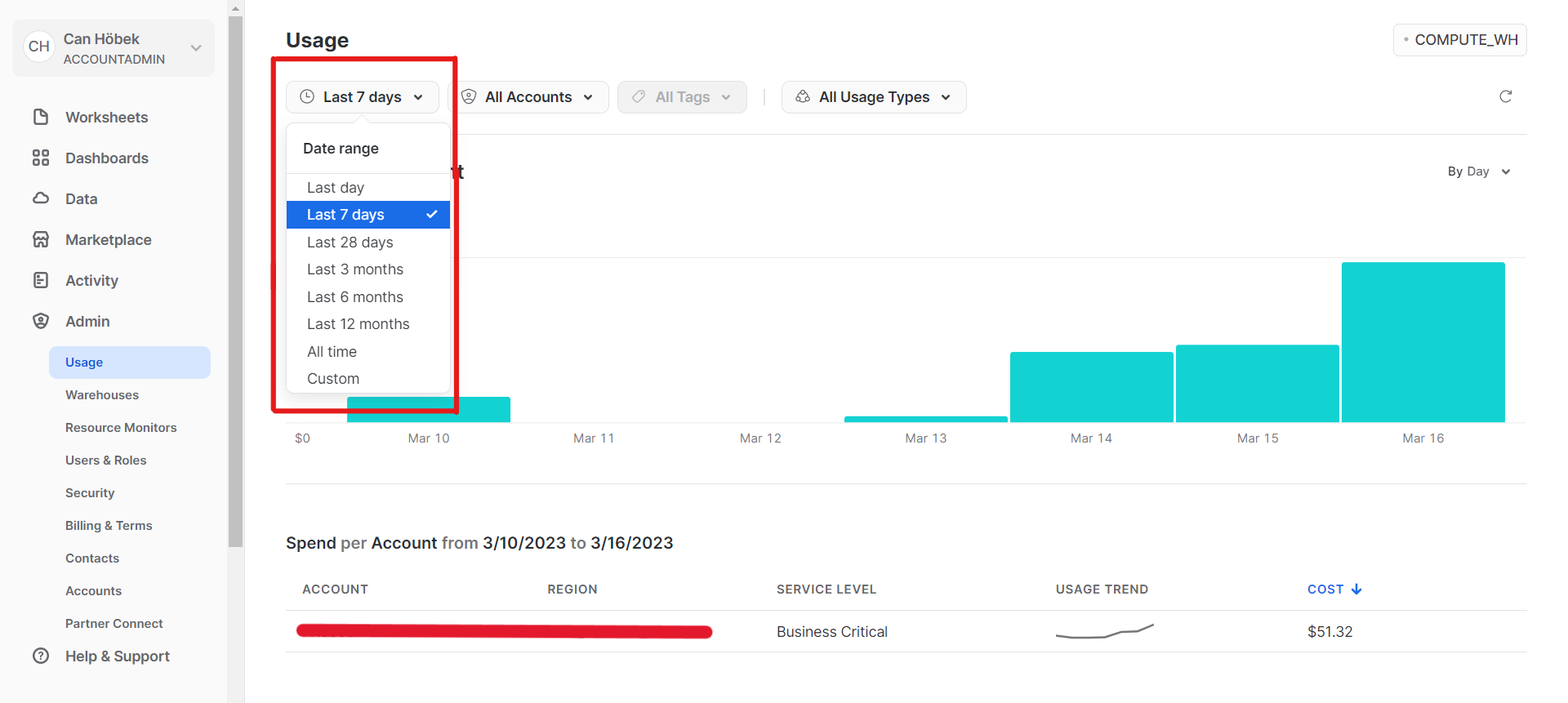
4. You can filter your usage history by specific resources, such as storage or compute, to get a more detailed view of your usage:
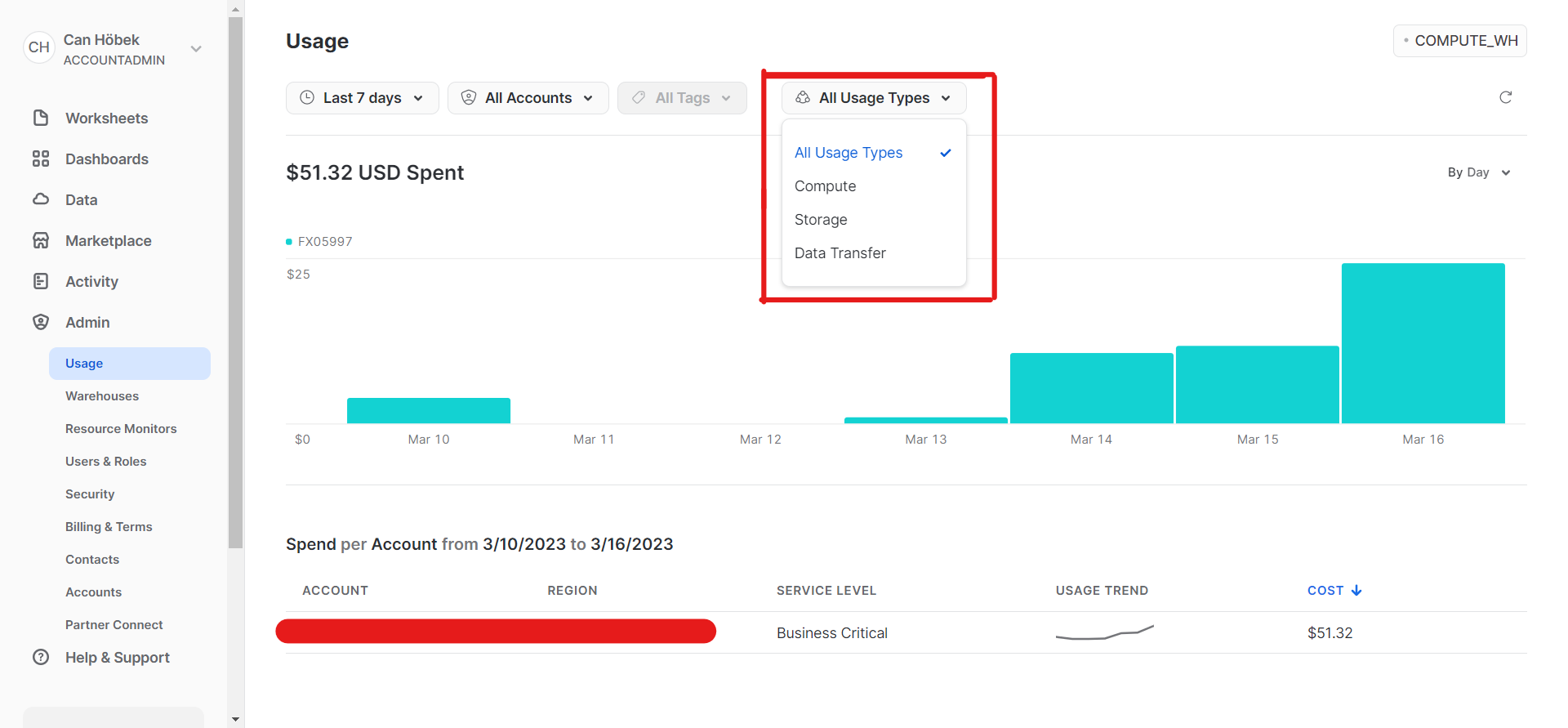
Example of monitoring the compute usage of last 28 days:
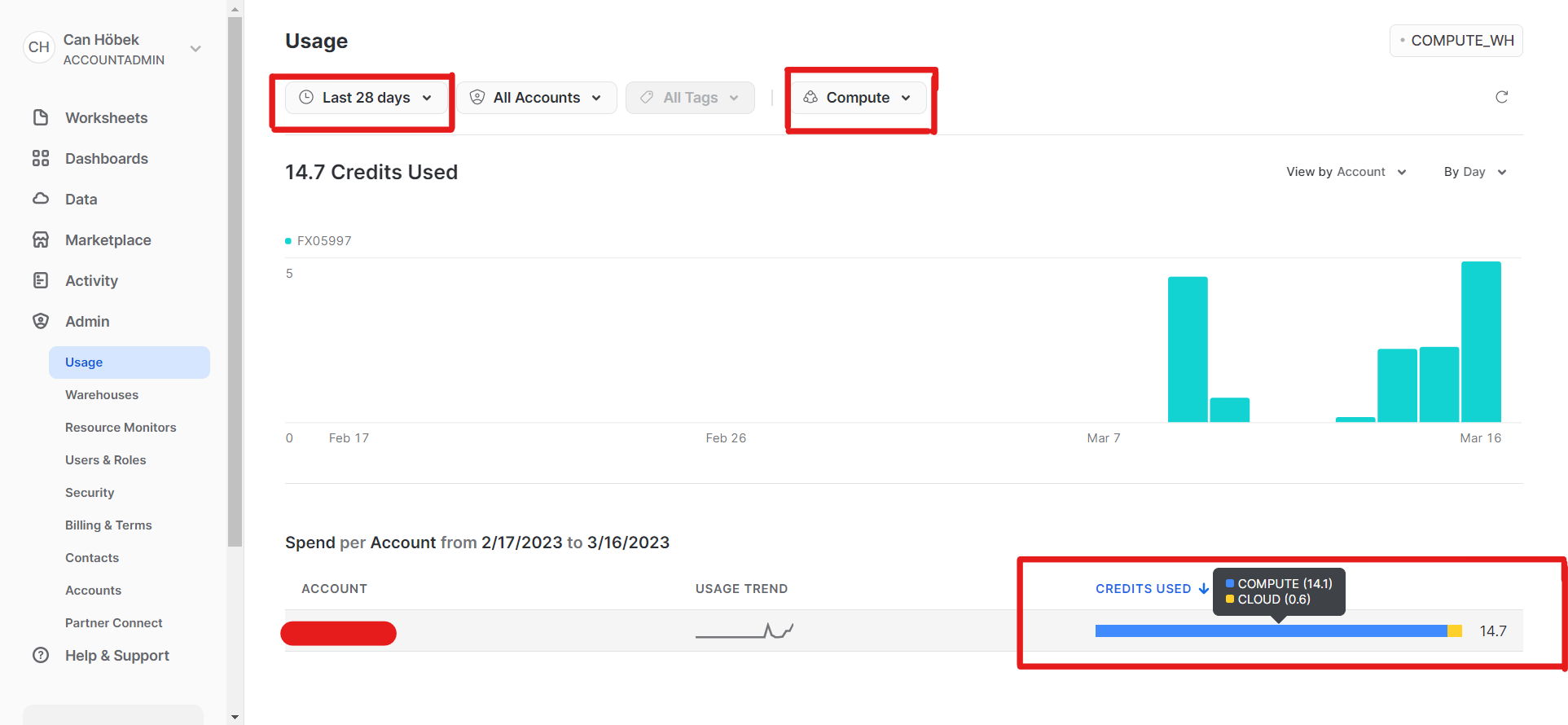
As you can see in compute usage option, Snowflake shows us the usage in the base of credits. This type is always going to be in credits when you want to see the usage for specific type; for the total usage display it uses a currency.
In the bottom right corner (when we choose a usage type) it displays us even the details of used credit. We can see from here in which operation we lost the most value and so on.
Reminder: it is important to remember that the usage in Snowflake depends on the Snowflake Version that you have your account with. In these examples we have our Snowflake Account in Business Critical version which is the one of the most expensive versions but it has some special features for it (you can check from the link).
To Check Your Snowflake Usage History in Real-Time Using Snowflake API’s
Snowflake also provides a number of APIs and integration tools that allow customers to monitor their usage history in real-time. This can help customers identify potential issues before they become major problems. To view your Snowflake usage history in real-time using API’s, first you should match your snowflake account with an python program. To do so you can check here.
Once you have that, you can use the Snowflake usage REST API to access usage information for specific accounts, warehouses, and users. In addition you can use Snowflake usage Python Connector as well to retrive information.
Conclusion
Overall, Snowflake’s usage section helps you to track your Snowflake utilization in a detailed way and to identify areas where you might be overspending and helps you to make adjustments to optimize your usage and reduce costs. As a last reminder, your Snowflake usage is going to depend on various factors but one of them is your accounts Snowflake Edition.
Snowflake offers you some additional features to track automatically the usage and allows you to set some maximum credit usage values for the condition that you want specifically; these feature is named Resource Monitors.
In addition, Snowflake, even without your input, enhances data with its auto-clustering feature and helps you to reduce your usage.
To have additional information you can see my blog Snowflake’s Pricing Control.
Credits
https://docs.snowflake.com/en/sql-reference/organization-usage





